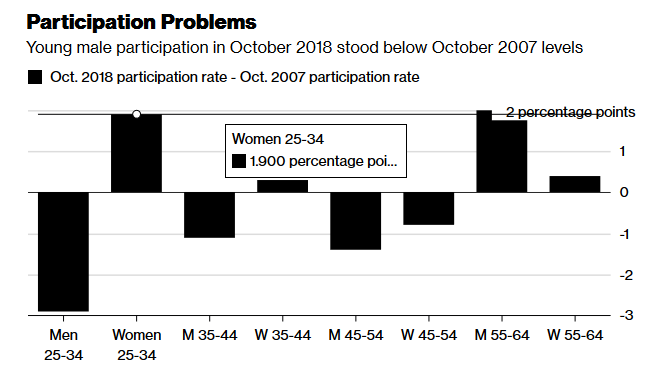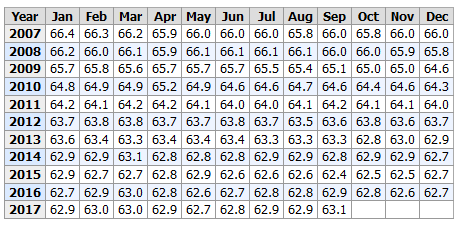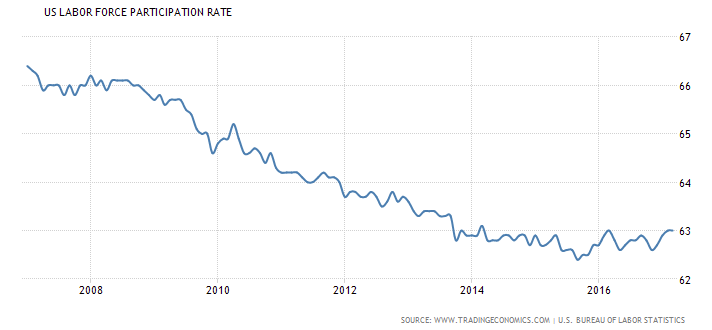Yesterday The Daily Caller posted an anonymous article written by someone they know to be a senior official in the Trump administration. I am posting the full text of the article because I believe all of it is very important. I have no additional comments.
As one of the senior officials working without a paycheck, a few words of advice for the president’s next move at shuttered government agencies: lock the doors, sell the furniture, and cut them down.
Federal employees are starting to feel the strain of the shutdown. I am one of them. But for the sake of our nation, I hope it lasts a very long time, till the government is changed and can never return to its previous form.
The lapse in appropriations is more than a battle over a wall. It is an opportunity to strip wasteful government agencies for good.
On an average day, roughly 15 percent of the employees around me are exceptional patriots serving their country. I wish I could give competitive salaries to them and no one else. But 80 percent feel no pressure to produce results. If they don’t feel like doing what they are told, they don’t.
Why would they? We can’t fire them. They avoid attention, plan their weekend, schedule vacation, their second job, their next position — some do this in the same position for more than a decade.
They do nothing that warrants punishment and nothing of external value. That is their workday: errands for the sake of errands — administering, refining, following and collaborating on process. “Process is your friend” is what delusional civil servants tell themselves. Even senior officials must gain approval from every rank across their department, other agencies and work units for basic administrative chores.
Process is what we serve, process keeps us safe, process is our core value. It takes a lot of people to maintain the process. Process provides jobs. In fact, there are process experts and certified process managers who protect the process. Then there are the 5 percent with moxie (career managers). At any given time they can change, clarify or add to the process — even to distort or block policy counsel for the president.
Saboteurs peddling opinion as research, tasking their staff on pet projects or pitching wasteful grants to their friends. Most of my career colleagues actively work against the president’s agenda. This means I typically spend about 15 percent of my time on the president’s agenda and 85 percent of my time trying to stop sabotage, and we have no power to get rid of them. Until the shutdown.
Due to the lack of funding, many federal agencies are now operating more effectively from the top down on a fraction of their workforce, with only select essential personnel serving national security tasks. One might think this is how government should function, but bureaucracies operate from the bottom up — a collective of self-generated ideas. Ideas become initiatives, formalize into offices, they seek funds from Congress and become bureaus or sub-agencies, and maybe one day grow to be their own independent agency, like ours. The nature of a big administrative bureaucracy is to grow to serve itself. I watch it and fight it daily.
When the agency is full, employees held liable for poor performance respond with threats, lawsuits, complaints and process in at least a dozen offices, taking years of mounting paperwork with no fear of accountability, extending their careers, while no real work is done. Do we succumb to such extortion? Yes. We pay them settlements, we waive bad reviews, and we promote them.
Many government agencies have adopted the position that more complaints are good because it shows inclusion in, you guessed it, the process. When complaints come, it is cheaper to pay them off than to hold public servants accountable. The result: People accused of serious offenses are not charged, and self-proclaimed victims are paid by you, the American taxpayer.
The message to federal supervisors is clear. Maintain the status quo, or face allegations. Many federal employees truly believe that doing tasks more efficiently and cutting out waste, by closing troubled programs instead of expanding them, “is morally wrong,” as one cried to me.
I get it. These are their pets. It is tough to put them down and let go, and many resist. This phenomenon was best summed up by a colleague who said, “The goal in government is to do nothing. If you try to get things done, that’s when you will run into trouble.”
But President Trump can end this abuse. Senior officials can reprioritize during an extended shutdown, focus on valuable results and weed out the saboteurs. We do not want most employees to return, because we are working better without them. Sure, we empathize with families making tough financial decisions, like mine, and just like private citizens who have to find other work and bring competitive value every day, while paying more than a third of their salary in federal taxes.
President Trump has created more jobs in the private sector than the furloughed federal workforce. Now that we are shut down, not only are we identifying and eliminating much of the sabotage and waste, but we are finally working on the president’s agenda.
President Trump does not need Congress to address the border emergency, and yes, it is an emergency. Billions upon billions of hard-earned tax dollars are still being dumped into foreign aid programs every year that do nothing for America’s interest or national security. The president does not need congressional funding to deconstruct abusive agencies who work against his agenda. This is a chance to effect real change, and his leverage grows stronger every day the shutdown lasts.
The president should add to his demands, including a vote on all of his political nominees in the Senate. Send the career appointees back. Many are in the 5 percent of saboteurs and resistance leaders.
A word of caution: To be a victory, this shutdown must be different than those of the past and should achieve lasting disruption with two major changes, or it will hurt the president.
The first thing we need out of this is better security, particularly at the southern border. Our founders envisioned a free market night watchman state, not the bungled bloated bureaucracy our government has become. But we have to keep the uniformed officers paid, which is an emergency. Ideally, continue a resolution to pay the essential employees only, if they are truly working on national security. Furloughed employees should find other work, never return and not be paid.
Secondly, we need savings for taxpayers. If this fight is merely rhetorical bickering with Nancy Pelosi, we all lose, especially the president. But if it proves that government is better when smaller, focusing only on essential functions that serve Americans, then President Trump will achieve something great that Reagan was only bold enough to dream.
The president’s instincts are right. Most Americans will not miss non-essential government functions. A referendum to end government plunder must happen. Wasteful government agencies are fighting for relevance but they will lose. Now is the time to deliver historic change by cutting them down forever.
The author is a senior official in the Trump administration.









